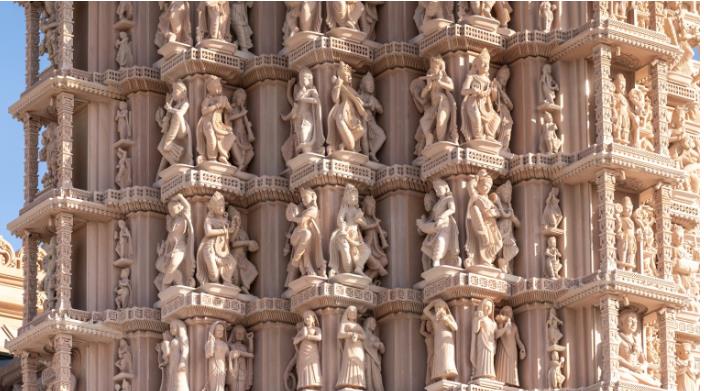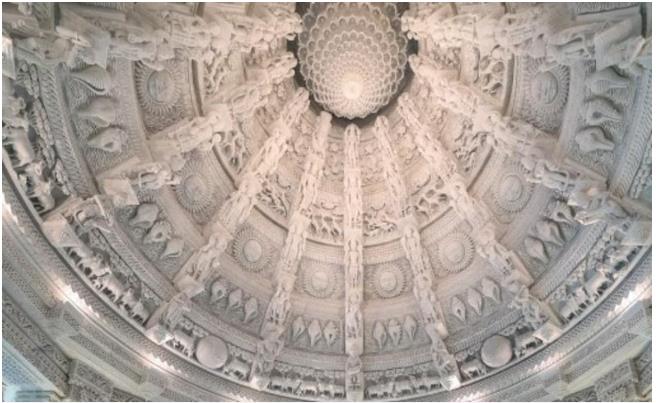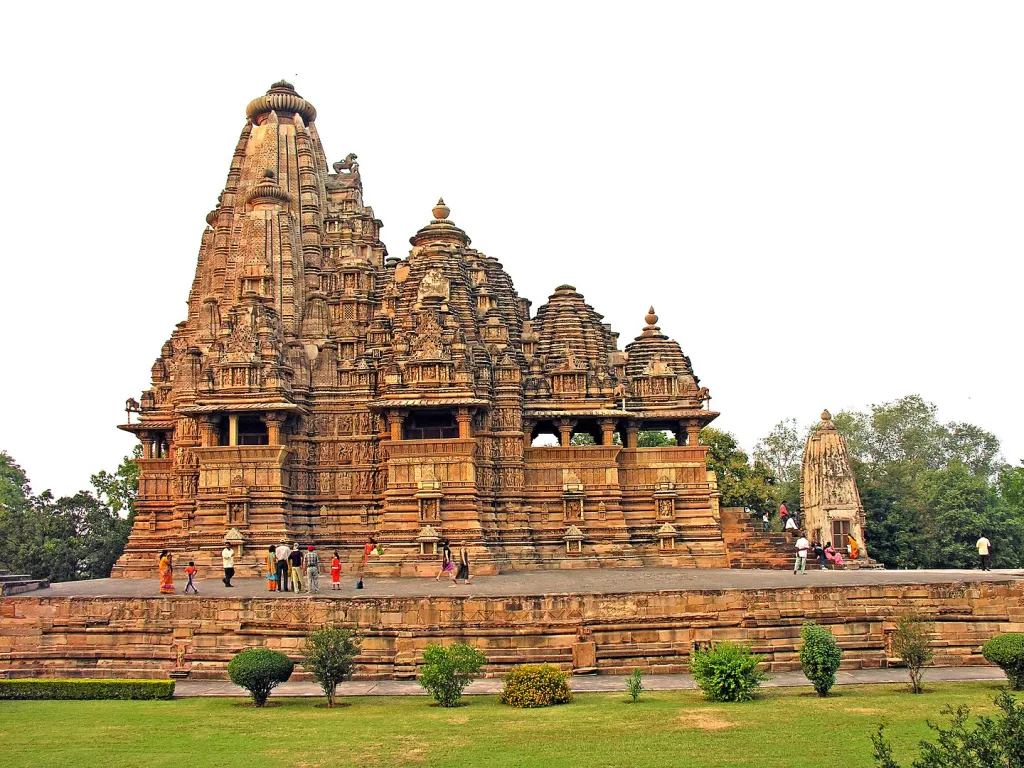News: “Dome of Harmony” Inside Sanctum Sanctorum of Abu Dhabi Temple
Q1. Give an account on Nagara style of architecture and its influence in modern temple architecture around the world.
In a unique gesture in April 2019, the temple’s foundation-stone laying ceremony was held due to the celebration of the year of Tolerance by the UAE. Several new elements have been included in the Abu Dhabi temple to bring the two nations and cultures together.

Special features of the temple:
● Nagara Style: Eighteen lakh bricks, seven lakh man hours and 1.8 lakh cubic metres of sandstone directly from Rajasthan — Abu Dhabi’s first Hindu temple has been made in the Nagara style of architecture and this is the Middle East’s first traditional stone Hindu temple.
● Construction materials: The temple’s external facade uses pink sandstone from Rajasthan. The interiors use Italian marble. “Interestingly, 20,000 tonnes of sandstone pieces were carved in Rajasthan and then shipped to Abu Dhabi in 700 containers.
● Significance of location: It is located around 50 km away stands the Sheikh Zayed Grand Mosque, the country’s largest mosque, which receives 50,000 visitors — worshippers and tourists alike — on a daily basis.
● Built at a height of 108 feet, the temple is also fitted with 300 earthquake sensors since the deserted area is susceptible to the earthquakes and considering the warm climate of UAE, Nano tiles have been used.

● Dome of Harmony has different levels. These levels represent the fire, earth, air, water and space. The depiction of different civilizations on pillars makes the temple’s architecture unique. The shank represents water; Tej represents the sun and running Deers represent air.
● Various civilizations: Apart from Indian civilization, stories are taken from the Maya, Aztec, Egyptian, Arabic, European, Chinese and African civilizations etc.
● The pillars have intricate carvings of deities and symbols central to the Hindu religion. Seven shrines of different deities including, Lord Ram, Goddess Sita, Lakshmi, and Lord Shiv, are present in the temple.
● The temple has been assigned seven shikhars (spires), representing the seven Emirates that come together to form the UAE. At the entrance, eight idols symbolise universal values such as faith, charity and compassion.
● Wall of Harmony: Various landmarks from across the world — East to West — have also been shown, while the word ‘harmony’ has been written in 30 different ancient and modern languages on the Wall of Harmony.
● Apart from 15 tales from India, including the Ramayana and Mahabharata, stories from Mayan, Aztec, Egyptian, Arabic, European, Chinese and African civilizations have also been depicted in the temple.
● Artificial rivers: The structure is surrounded by rivers that were created artificially from waters of the Ganga and Yamuna. The Saraswati is represented in the form of a white light. Varanasi-like ghats have been created on one side, through which the artificial river passes.
● To give equal representation to the host country, along with animals that occupy an important place in Indian mythology like elephants, camels and lions, the UAE’s national bird, the falcon, has also been included in the design.
The architectural tradition of Indian culture could spread through regional countries’ relationships at the same time the temple must not be seen as an exception that came about as a result of mutual need. Secularism can survive only with new ideas and new beginnings. Abu Dhabi is both a move towards autonomy for post-colonial societies and an aspiration for a world free from hostilities.

